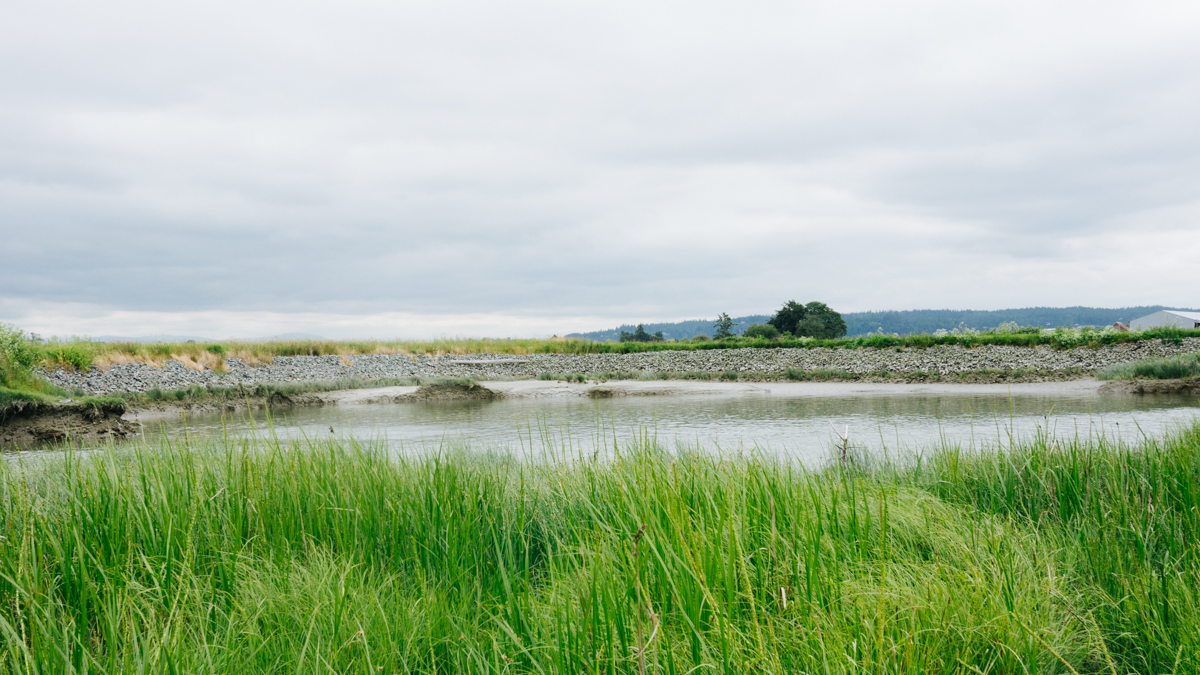Written & Photographed by Carrie Krueger, Director of Marketing for The Nature Conservancy in Washington
Crater Lake National Park provides unexpected adventure
When the theme song from “Gilligan’s Island” begins running through your head, it is rarely a good sign. Our “three hour tour” happened in Crater Lake National Park. We set-sail that day to tour the stunning, deep lake, and wound up trapped on the little island in the middle known as Wizard Island.
But let’s start at the beginning: Five families from five different parts of the country chose Crater Lake National Park for a summer vacation and reunion. Located in south central Oregon, the park is near nothing and not particularly easy to get to. But the trek is well worth it. The first view of the lake is unforgettable. The color is a remarkable deep blue and the water is surrounded by sheer cliffs and during our visit, a great deal of snow. Once we worked through our childish impulse to pelt one another with snow, we settled into the picturesque lodge on the rim of the volcanic crater that forms the lake. We spent our first day on short hikes around the region, learning about the geologic events the formed this stunning place.
The next morning we packed sandwiches and snacks and made our way to the tour boat dock. We were promised a water tour of the lake including drop off and pick up at Wizard Island where we could explore further. It seemed simple enough and we felt well prepared, even with many young kids in tow.
Wizard Island was a blast. From the rocky shore, we hiked to the high point of the island where we discovered a snow-filled crater. In no time at all, the kids had made sleds out of their rain jackets and anything else they could find and were zooming down the hills and hiking back up. This was sheer bliss, an unexpected delight – sledding in shorts and t-shirts, on a sunny island in the middle of the nation’s deepest lake. Wow.
Soon it was time to head to the little dock and await pick-up. A small crowd gathered at the dock, but when the next tour boat came by, it didn’t stop. The crowd on the boat waved and the captain called out that the boat was full and no one onboard wanted to get off at Wizard Island, so we would have to wait for the next boat. When this same scenario happened three times over the 90 minutes, we started to feel just a little concerned. One of us whistled the Gilligan’s Island theme and another softly sang “A three hour tour, a three hour tour.”
But in nature, there is always a way to have fun. Boredom is not an option! On the rocky shoreline, a rock-skipping contest ensued, with kids from all the waiting families (and some adults) joining in. On the flat, smooth water, rocks could skip and skip and skip! For those not in the skipping mood, it was time to get creative with cairns. You know, those little towers and piles of rocks – those are cairns and it’s amazing how much fun it is to look for the right flat rocks to build with. There were woods to explore, massive games of “eye spy” and critter spotting.
As the hours went by and food ran low, there was a funny irony in being able to actually see the lodge hanging on the cliff in the distance. Our home away from home, so close and yet so far. Surely we would not be left for the night? We were ill prepared for such a possibility, relieved we had at least insisted each child bring a light jacket. The day had been sunny and nearly hot, but as shadows lengthened, it quickly became chilly. Just for fun, we sat on the shore and brainstormed various ways we could get from there to the lodge. None were feasible, of course, but neither were most of the things Gilligan and his gang attempted on the old TV show. The kids enjoyed pretending we were actually going to spend the night on the island and we talked about the various ways we would shelter and feed ourselves.
Luckily, before anyone could lose their sense of humor about the situation the tour boat company dispatched an empty boat specifically to pick us all up. A dozen families and groupings crowded the dock and piled onto the boat and we tried to remember, did the Gilligan’s Island gang ever get rescued?
As young adults, all of the kids on that adventure still talk about the day we were trapped on Wizard Island and the fun we had exploring nature, as we waited to be “rescued”. Together we’ve visited many more National Parks and feel a collective sense of gratitude for the accessibility of such beautiful places and for the opportunity to commune and experience them. For me, every foray into nature stirs a powerful sense of responsibility to protect and preserve nature so that each generation can experience wild places, little adventures and big escapes.










































































